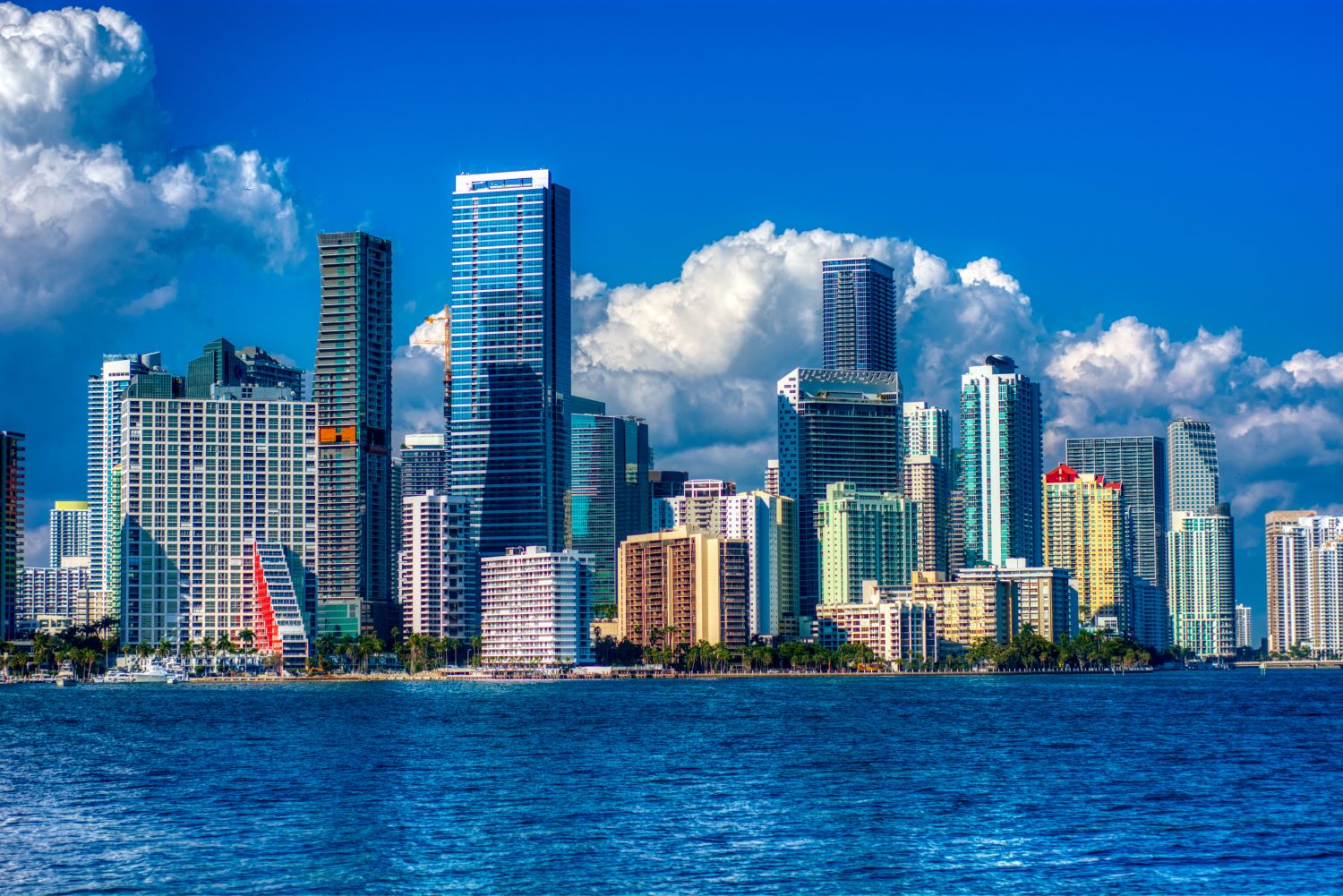
Miami, known for its vibrant culture, stunning beaches, and year-round sunshine, attracts millions of visitors annually and has become a desirable place to live. However, living in such an exciting city comes with its price. If you're considering relocating to Miami, it’s essential to have a clear understanding of the cost of living in Miami to ensure it fits your budget and lifestyle.
Housing Costs in Miami
Housing is by far the most significant component of the cost of living in Miami. The city’s real estate market is competitive, driven by high demand from locals, out-of-state buyers, and international investors. Whether you're looking to rent or buy, prices in Miami can be higher than the national average.
- Renting: On average, renting a one-bedroom apartment in the city center can cost around $2,500 per month. If you move a bit farther from the downtown area, you might find a one-bedroom for about $1,800 to $2,000. Renting a larger space, such as a two-bedroom apartment, in prime neighborhoods like Brickell or South Beach, can easily go beyond $3,000 monthly.
- Buying a Home: The median home price in Miami is about $550,000, which varies depending on the location and type of property. Waterfront properties and condos in luxury high-rises can sell for several million dollars. However, there are more affordable areas in neighborhoods like Little Havana or North Miami, where homes range between $300,000 to $400,000.
Transportation Costs in Miami
Getting around Miami can add a considerable amount to the overall cost of living in Miami. While the city has some public transportation options, many residents prefer owning a car due to Miami’s vast size and the often unreliable transit services.
- Public Transit: Miami’s public transportation includes buses, trolleys, and the Metrorail. A monthly transit pass costs around $112. However, depending on your location and travel habits, you may find that public transportation doesn’t meet all your needs.
- Car Ownership: Owning a car in Miami is common and can be expensive. Parking fees, gas, insurance, and car maintenance all add up. Miami drivers pay about $1,500 to $2,000 annually for car insurance, one of the highest rates in the country. Gas prices tend to fluctuate, but you can expect to pay an average of $4 per gallon.
Utilities and Internet
The hot and humid climate in Miami means that air conditioning is not a luxury but a necessity for most households. As a result, your utility bills could be higher than in more temperate regions.
- Electricity: Expect to pay around $150 to $200 per month for electricity in a one- or two-bedroom apartment. This can increase during the summer months when air conditioning is running constantly.
- Water and Trash: Utilities for water, trash, and sewage services are generally reasonable, costing around $70 to $100 per month for most households.
- Internet and Cable: High-speed internet in Miami averages around $70 per month. If you bundle with cable TV services, the total could climb to $150 or more, depending on the package you choose.
Healthcare Costs
Healthcare is another significant factor when assessing the cost of living in Miami. While the city has world-class hospitals and healthcare providers, the expenses for healthcare can vary widely based on your insurance coverage.
- Health Insurance: If you have health insurance through your employer, your premiums may range from $300 to $600 per month, depending on the coverage. For those who need private insurance, the costs are generally higher, averaging about $400 to $800 monthly.
- Out-of-Pocket Expenses: Doctor visits in Miami can cost anywhere from $150 to $300 without insurance. Prescription medications, dental services, and emergency care can also add significant costs, making health insurance essential for residents.
Groceries and Dining Out
Food is another important aspect of the cost of living in Miami, and while you can find affordable grocery stores, dining out can quickly add up, especially if you frequent popular spots in tourist-heavy areas.
- Groceries: The average monthly grocery bill for a single person is around $350 to $450, while a family of four may spend upwards of $900 or more. Grocery prices in Miami are about 10% higher than the national average.
- Dining Out: Miami is famous for its diverse dining scene, offering everything from fine dining to casual street food. Eating out at an average restaurant will cost around $15 to $25 per person, while a three-course meal at a mid-range restaurant can be upwards of $60 for two people. Trendy spots in areas like Wynwood or South Beach can cost significantly more.

Entertainment and Leisure
Miami’s entertainment and leisure scene is one of the city’s biggest attractions, and residents enjoy access to beautiful beaches, cultural events, nightlife, and outdoor activities. However, leisure activities can also contribute to the cost of living in Miami.
- Fitness and Sports: A gym membership in Miami averages around $50 to $80 per month. If you prefer outdoor activities like paddleboarding, jet-skiing, or joining a sports league, expect to spend even more on rentals or memberships.
- Nightlife and Events: Miami is known for its vibrant nightlife, but enjoying the city’s clubs, bars, and events can be pricey. A night out at a trendy club could set you back $100 or more, including drinks and entry fees.
Taxes in Miami
One of the most appealing aspects of living in Miami is Florida’s lack of a state income tax, making it an attractive option for those seeking to keep more of their earnings. However, sales tax and property taxes should still be considered when assessing the cost of living in Miami.
- Sales Tax: Miami has a 7% sales tax, slightly above the national average.
- Property Tax: Property tax rates in Miami-Dade County average around 1.02%, meaning if you own a home valued at $500,000, you can expect to pay about $5,100 annually in property taxes.
Education and Childcare
If you have children or plan on starting a family in Miami, education and childcare are additional costs to consider.
- Public Schools: Miami has a mix of high-performing and struggling public schools, so many families choose private education, which can be costly.
- Private Schools: The average cost of private school tuition in Miami ranges from $10,000 to $20,000 per year, depending on the institution.
- Childcare: Full-time daycare or preschool can cost anywhere from $800 to $1,500 per month, depending on the location and quality of the facility.
Conclusion
The cost of living in Miami can vary significantly depending on your lifestyle and spending habits. While the city offers a high quality of life with its beautiful weather, diverse culture, and abundant entertainment options, it comes with a relatively high price tag. Whether you’re planning to rent or buy, commute or own a car, or enjoy Miami’s dining and nightlife, it’s crucial to budget accordingly.
If you're considering a move to this vibrant city, be sure to research thoroughly and plan for the various expenses that come with living in Miami. For those ready to make the leap, hiring a professional moving company can make the transition smoother and stress-free.
City Movers Miami can help ensure that your move goes as smoothly as possible, allowing you to focus on settling into your new Miami lifestyle. Whether it’s a residential or commercial move, we handle every detail from start to finish, ensuring a smooth process that leaves our customers happy and settled. When you choose us, you're choosing a dependable crew that’s by your side every step of the way. Just one phone call and we’ll take care of everything for you!














